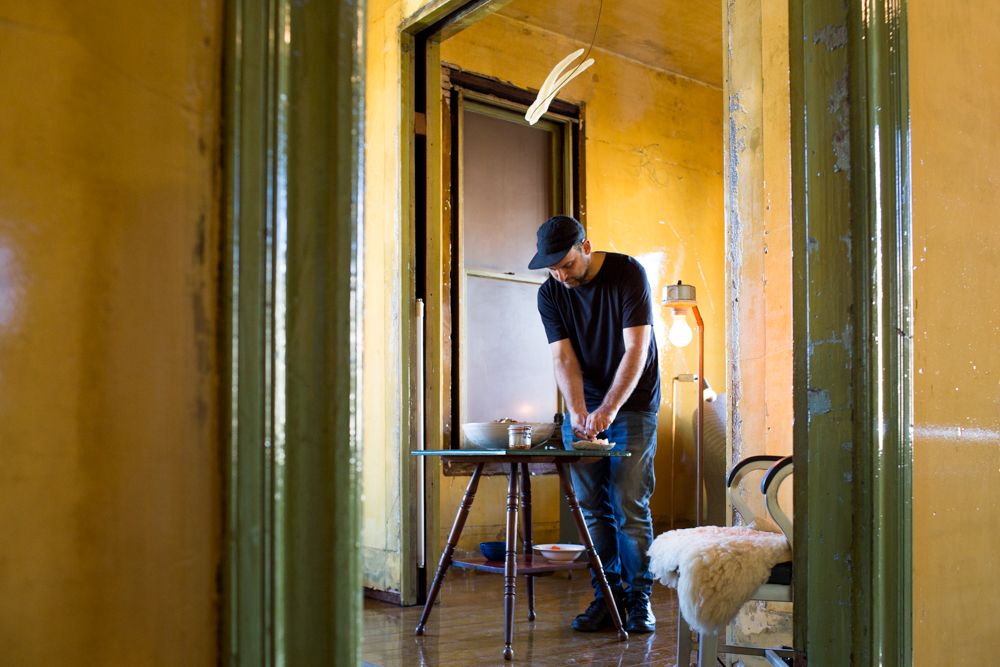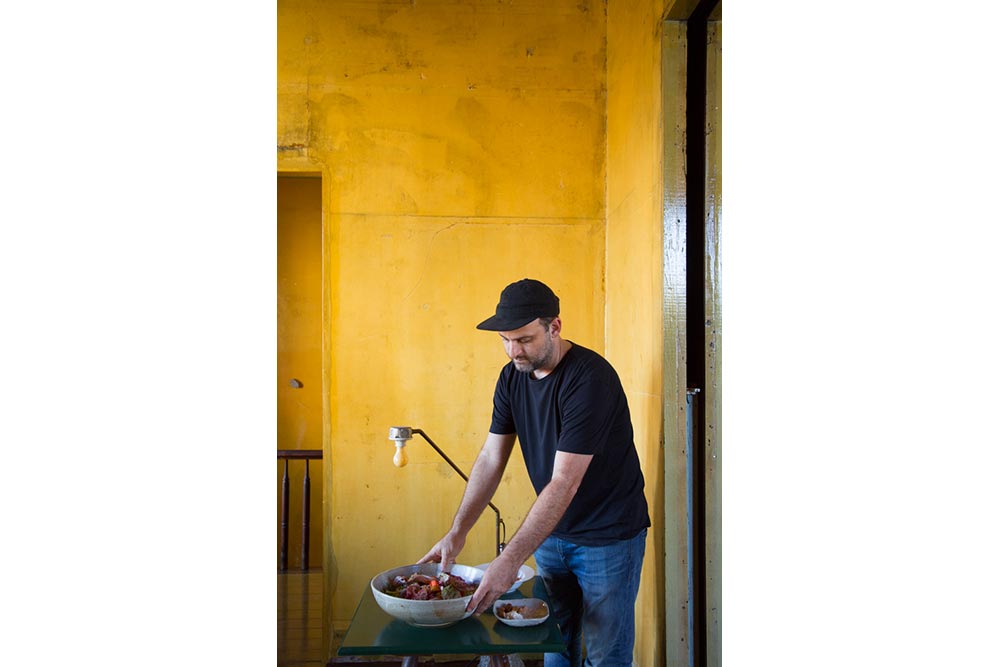Chicory, Puntarelle, Marcona almonds, Ricotta and Finger Limes
Leif Hedendal’s Puntarelle Salad
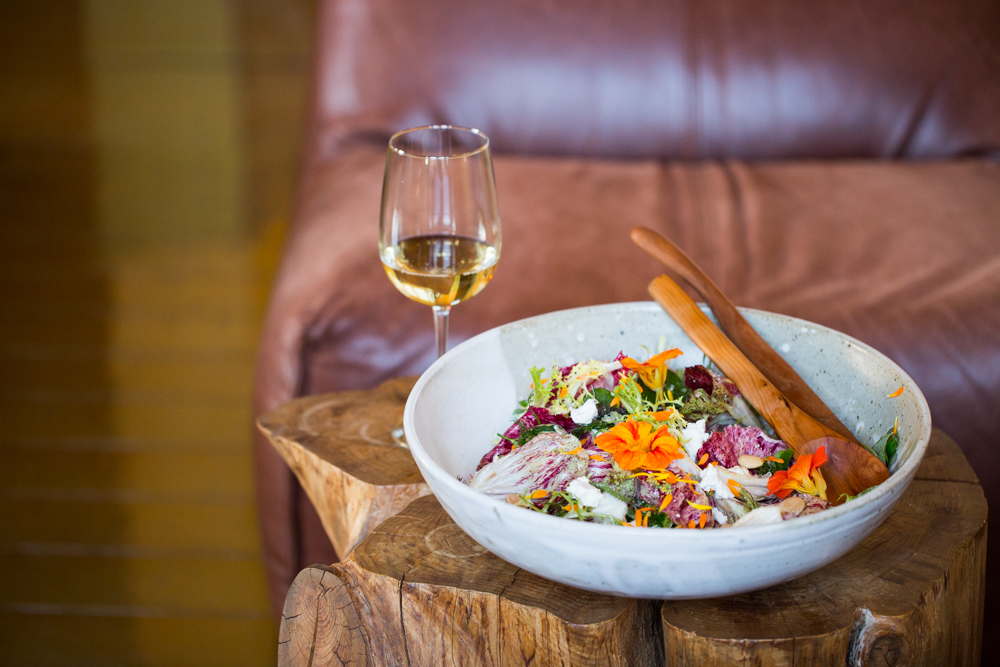
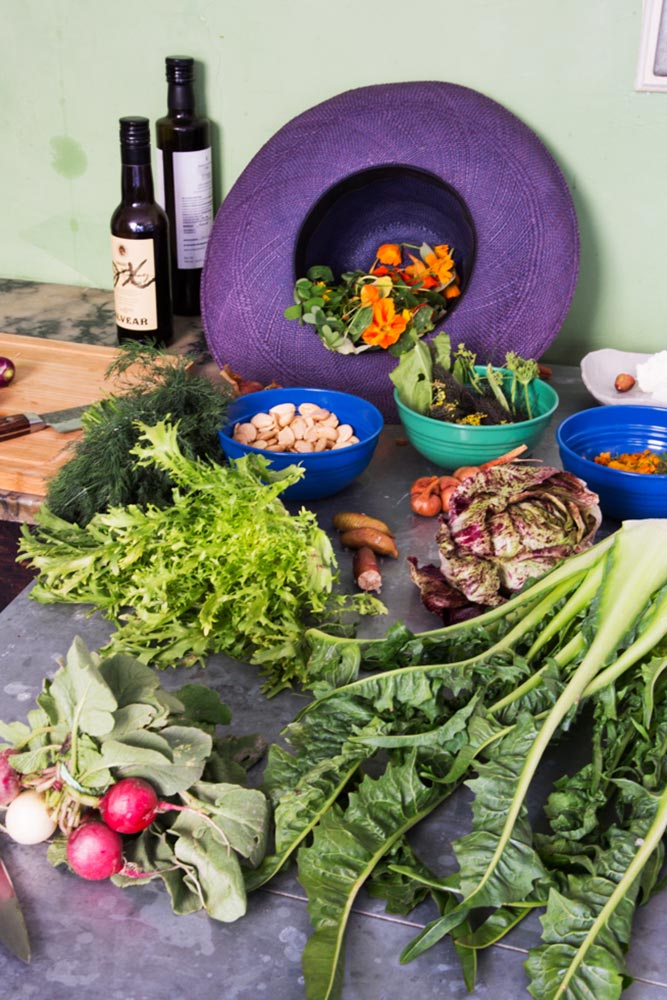
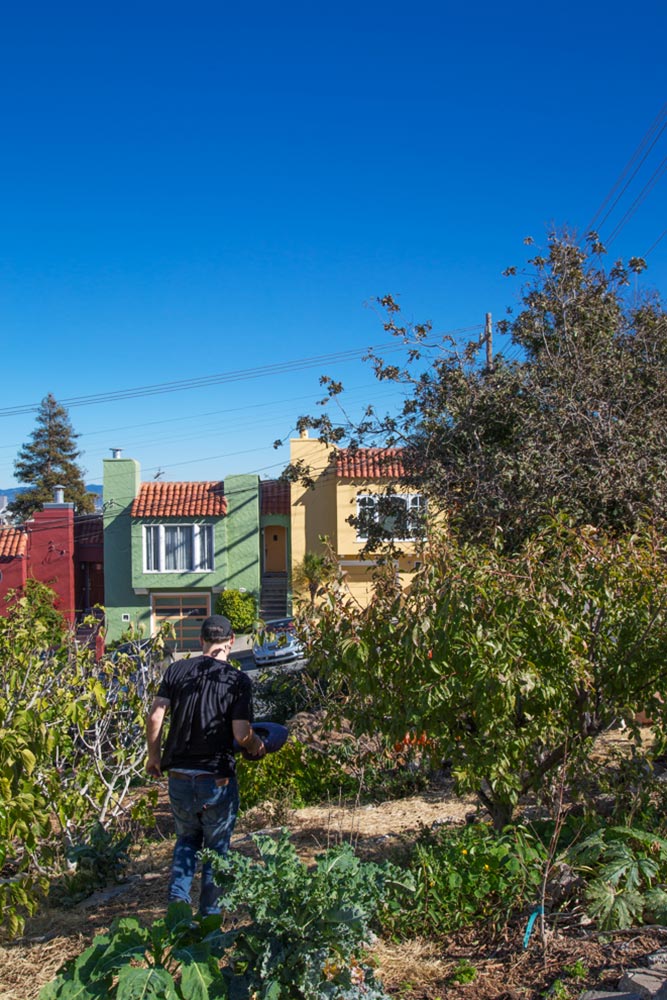
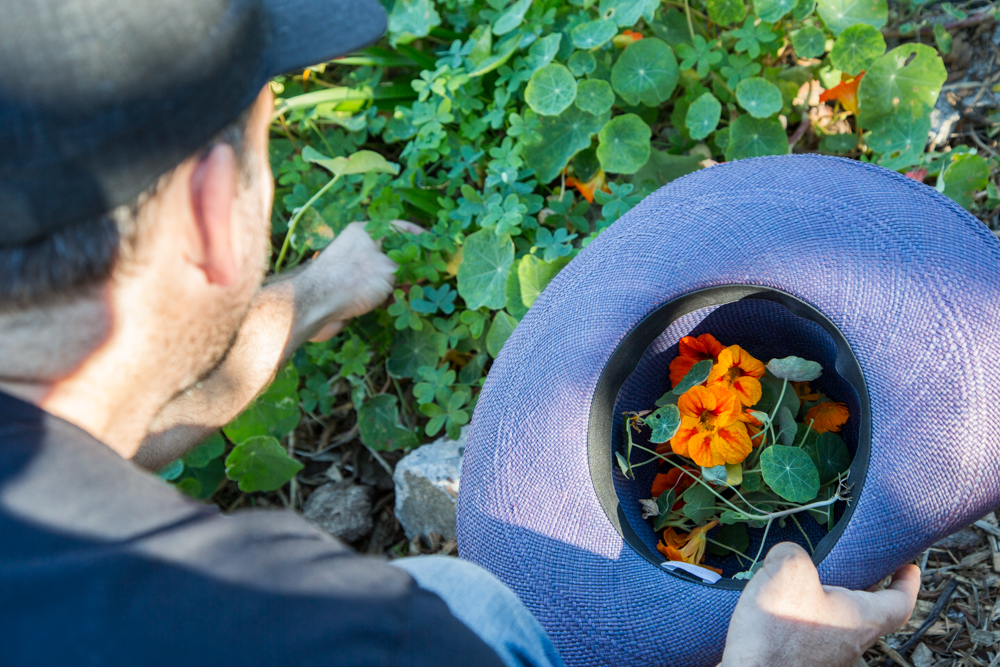
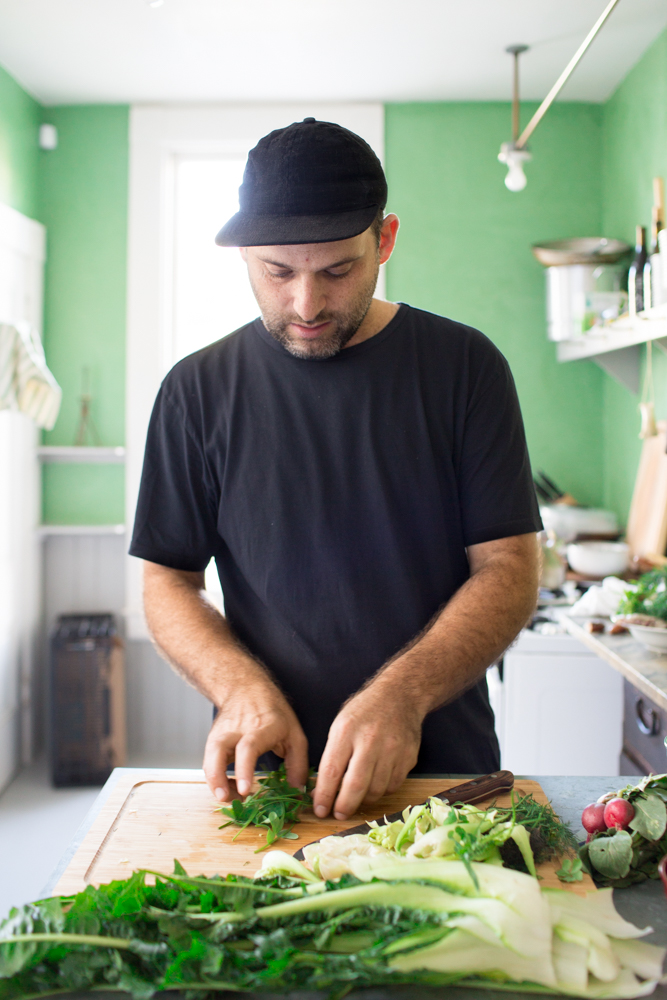
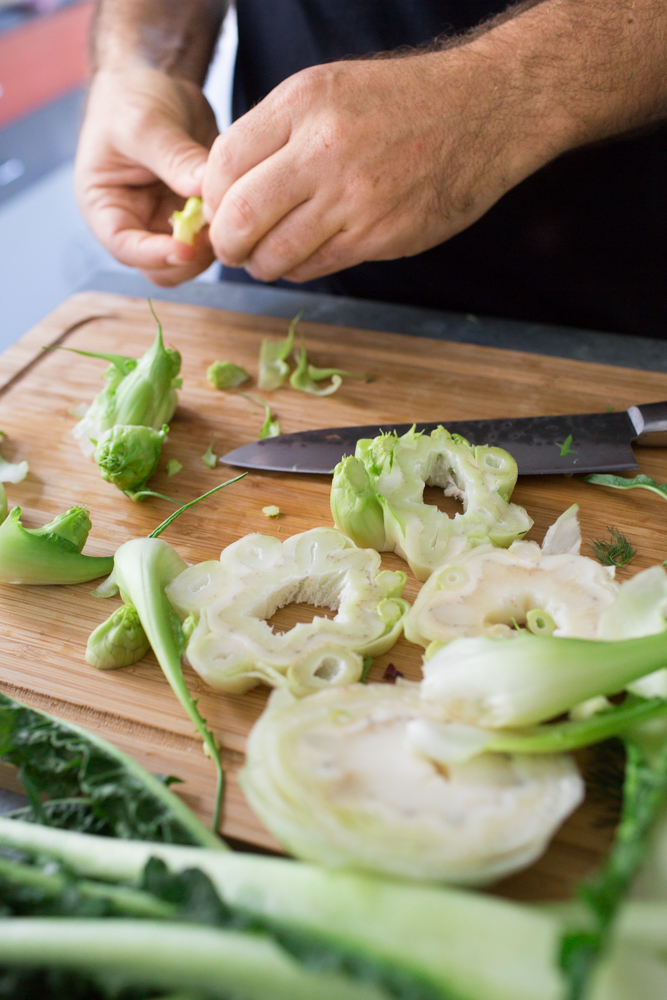
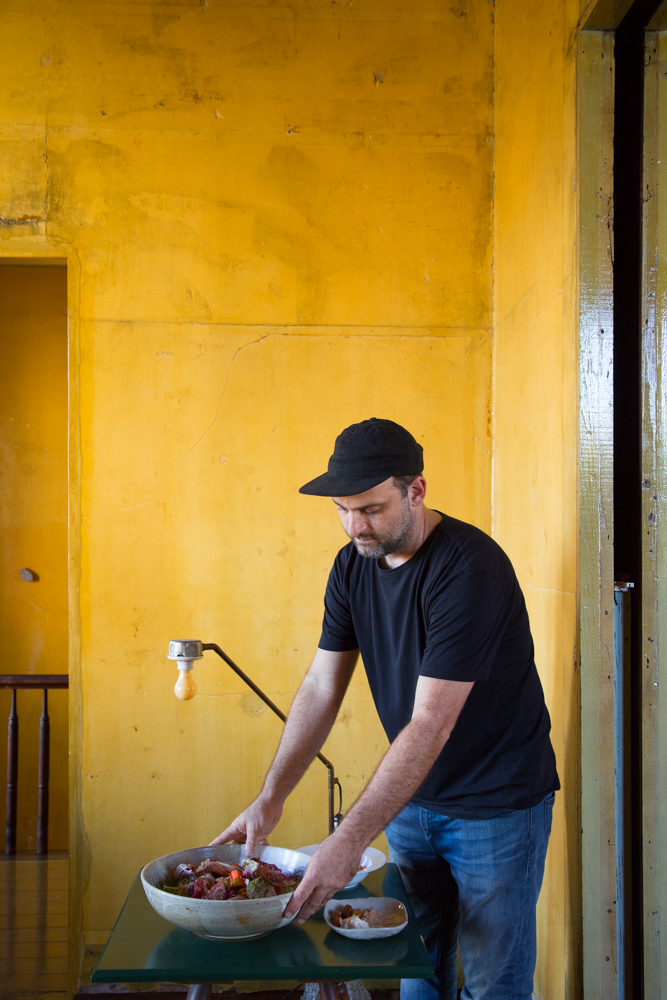
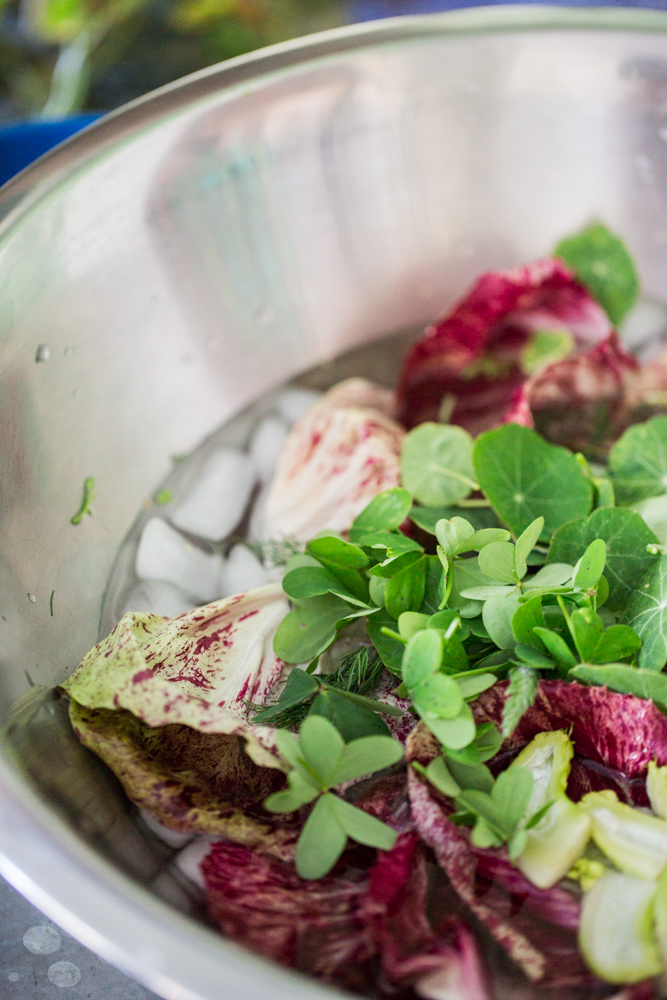
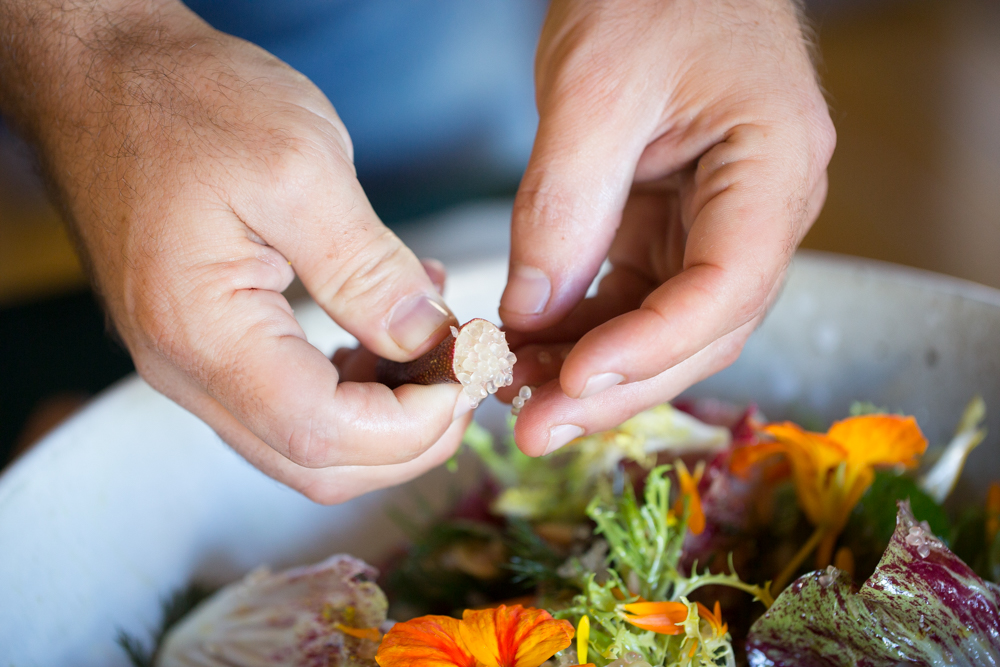
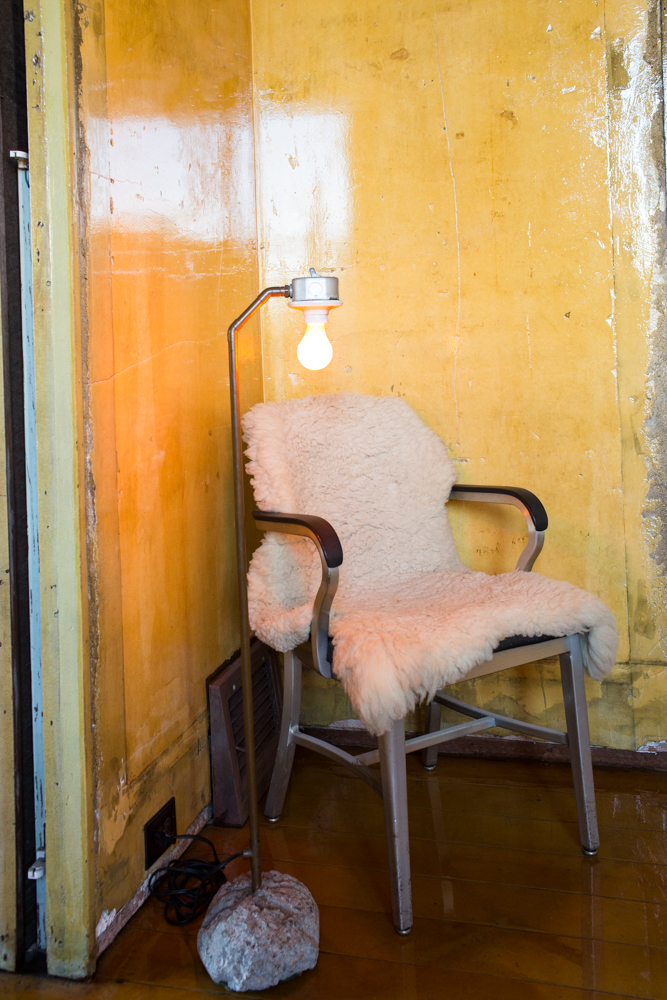
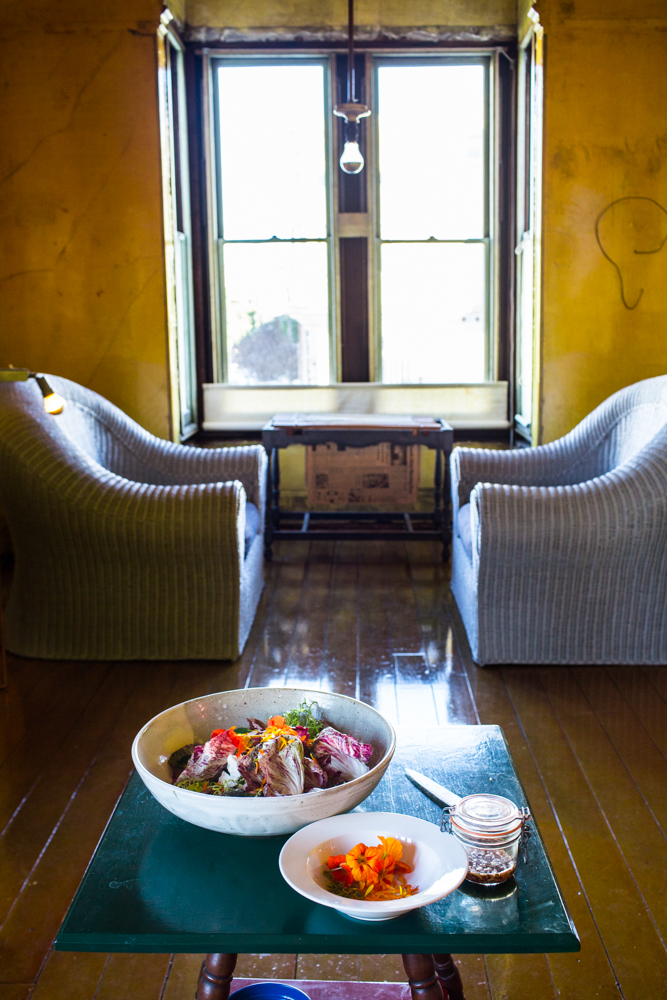
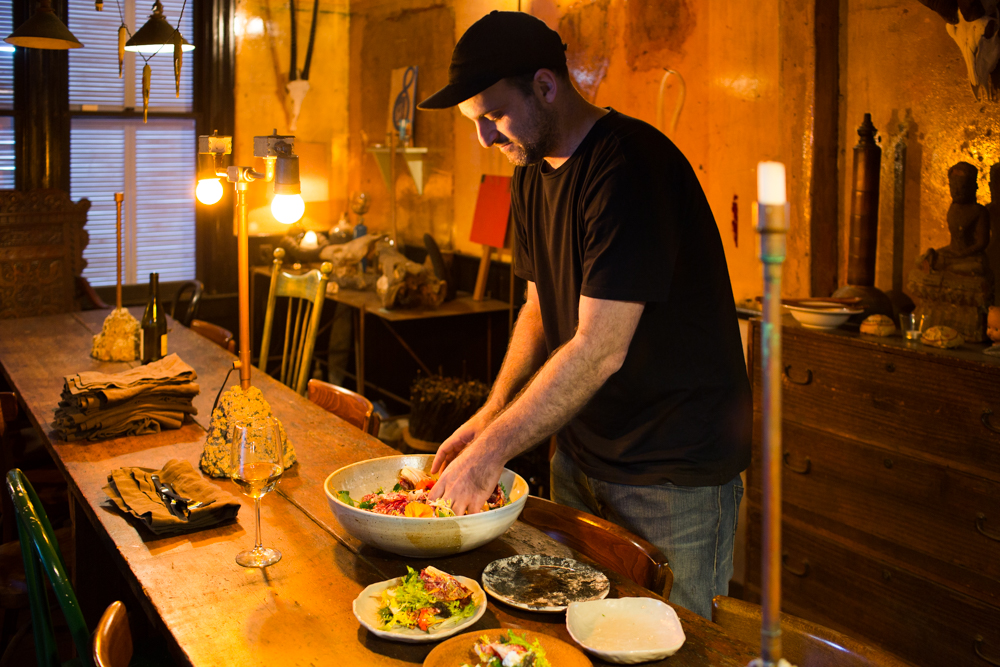
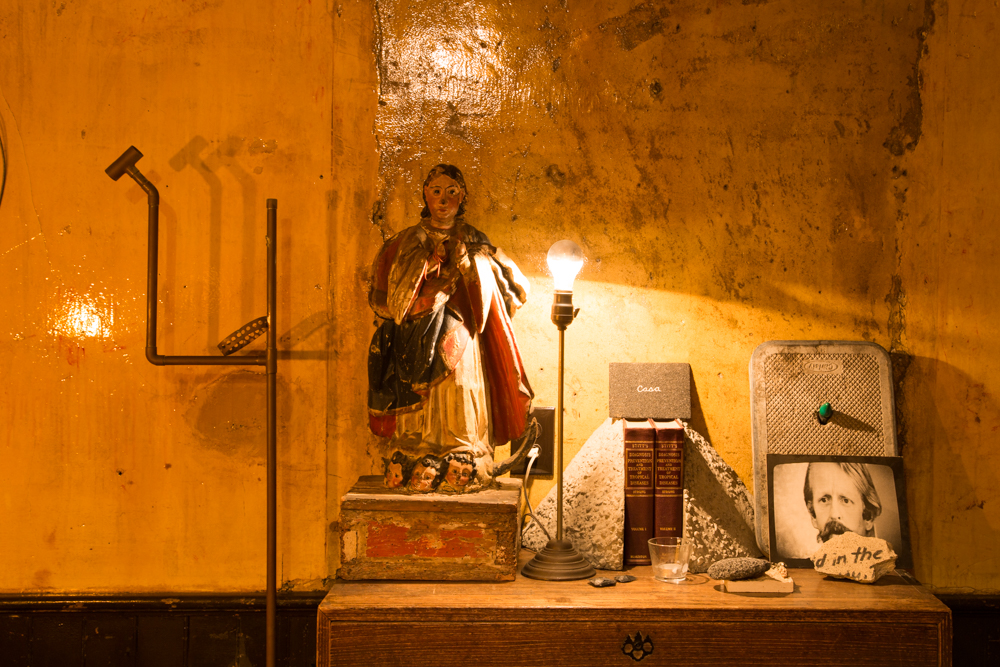
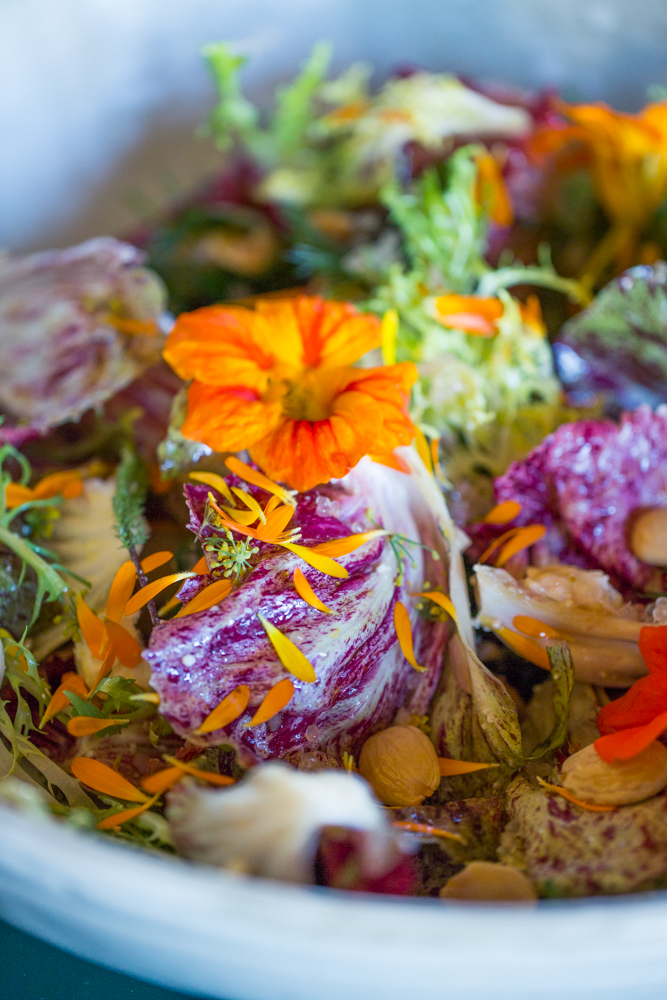
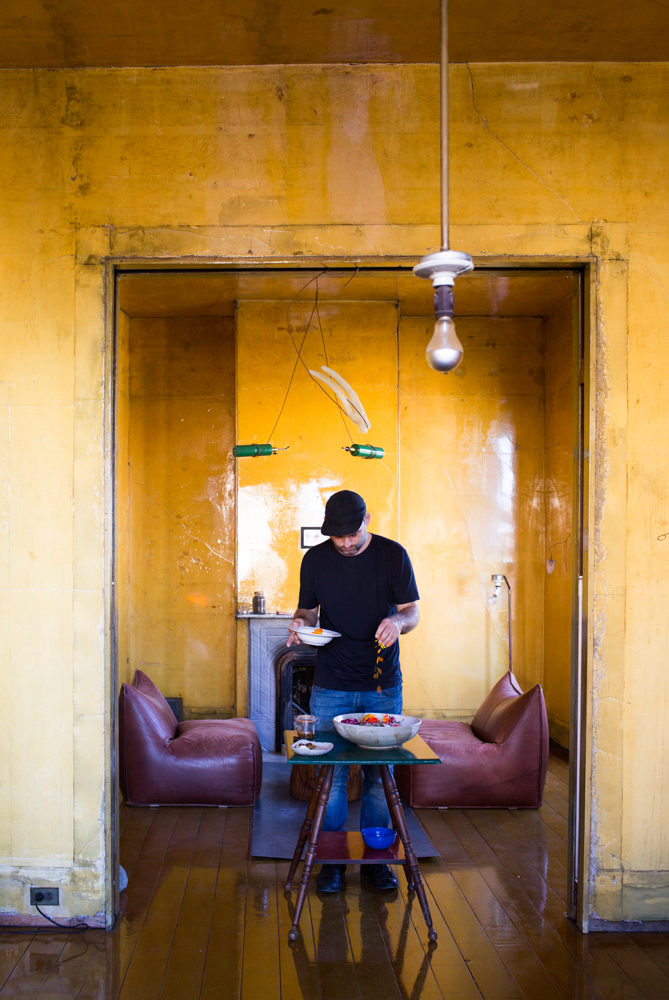
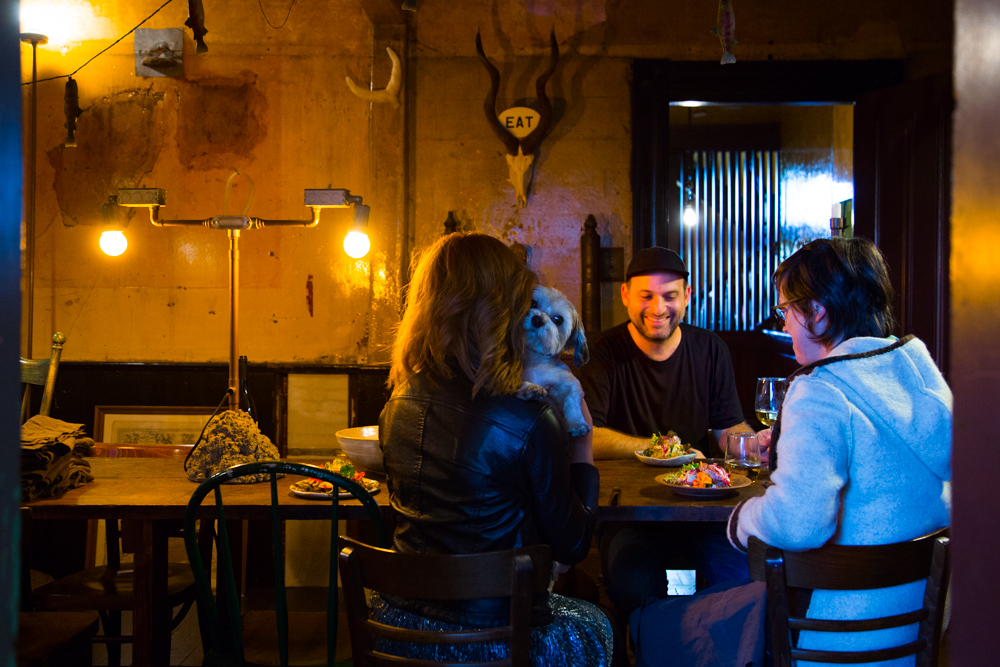
POSTED UNDER
- California,
- foraging,
- San Francisco
INGREDIENTS
- almond,
- chicory,
- finger lime,
- puntarelle,
- rictotta
NOTES
Puntarelle is actually not a vegetable in and of itself. Puntarelle refers to the heart of wild spiky green chicory that is beloved in Italy, most often used in simple salads. Do not attempt to eat the bitter outer leaves raw; they are nearly inedible and you will be sorely disappointed. Leif finished his salad with gems of finger lime flesh, my favorite, if not a little gimmicky, chefy ingredient. The oblong citrus is about 2″ – 3″ long, and filled with caviar-like membranes. They pop in your mouth and offer a mellow note of acidity.
RECIPE
DIFFICULTY
EASY
SERVES
4
PREP TIME
10 MINS
For the salad
-
1headradiccho, leaves separated
-
1headfrisée, outer leaves removed
-
1headendive
-
1headpuntarelle, chopped
-
1bunchbreakfast radishes, sliced thin thengthwise
-
1small bunchdill, fronds picked
-
1/4cupfresh sheep ricotta
-
1/2cupmarcona almonds
-
1/4cupnasturtium leaves + flowers
-
1tbswild fennel flowers
-
1freshfinger lime
For the Dressing
-
1largeshallot
-
2oz.Pedro Ximenez vinegar
-
5oz.extra virgin olive oil
-
sea salt to taste
POSTED UNDER
- California,
- foraging,
- San Francisco
INGREDIENTS
- almond,
- chicory,
- finger lime,
- puntarelle,
- rictotta
Making a salad with San Francisco’s Leif Hedendal is a multistep process: First, you have to make breakfast and sit at the slab wood table he designed himself and lay out a strategy. Then, you will likely cruise over to one of many public spots on his radar to forage for some wild nasturtium, some edible blossoms, and whatever other treasures the overgrown corners of the city might offer on a given day. From there, to the Ferry Building to buy premium cheeses, heirloom veggies and some wine, of course. Just when you think it’s time to hit the kitchen, Leif will have yet another idea. In this case, we relocated to one of the most haloed homes in the Mission: The recently restored David Ireland House. David Ireland was a beloved figure responsible for fomenting the Bay Area’s conceptual art scene. Ireland saw no distinctions between his life and his art and treated his home as a living installation, a total work of art that was in a state of perpetual progress. Every square inch of perfectly peeling paint, the sculptural light fixtures and the post-it notes on the wall remain in-tact; every detail is entirely intentional. Ireland’s favorite saying, “You can’t make art by making art” is a touchstone for a generation of artists who sought to expand beyond the studio, to work in a variety of media and complicate the commodification of an artist’s practice.
Until recently, Ireland’s home at 500 Capp Street was closed to the public. My husband and I have regularly shielded our eyes, pressed our noses against the glass and peeked in at the mysterious home. It wasn’t until Leif’s salad that I actually had the chance to poke around, and furthermore, cook there. This was actually the perfect setting for a Leif to make a salad, as his own practice blurs the lines between art and food, dining and community engagement.
leif hedendal in his own words
Julia Sherman: How did we end up at the David Ireland House?
Leif Hedendal: The people who renovated the space and turned it into a museum of sorts wanted me to do some donor cultivation type preview dinners before it opened to the public. They were very happy with me and asked me to be the regular chef for that kitchen, so I have a bit of special access, if I ask.
JS: Was it a dream come true to cook there? What do you love about cooking in artists’ homes and for artists themselves?
LH: I love cooking there! The kitchen is rather small but the dining room is so weird and creepy! And the house is just amazing. I like cooking for and with artists because they always have a unique perspective on culture and often are very interested in food. I have always been drawn to artists socially, but now I am also more interested in collaborating with artists as part of my own practice.
JS: I think your Dinner discussion series are the best expression of the way you work. Tell me how you started Dinner Discussion? Was this something you have always been doing and then decided to formalize?
LH: I was doing a lot of underground restaurants and pop-ups in the mid-aughts. I was also fairly involved with the Oakland music scene and was booking some shows and throwing some parties. I have always liked to throw parties and bring different sets of friends’ subcultures together. In 2008 I decided to check out this Social Practice art conference at UC Santa Cruz. I didn’t know all that much about that world until then, but following that experience I wanted to start a food-related project more along those lines. Dinner Discussion evolved out of a few different ideas and became a monthly dinner I did in my apartment starting at the end of 2008. I am currently organizing #42 in NYC for this October to be featured in the cookbook I am working on.
JS: I know you are very interested in social practice as an art form. Do you think about your dinners and cooking in those terms?
LH: I do position some of my work in that realm. Dinner Discussion is a long-running series I am framing as an art project. A lot of the other work I do is just catering. Sometimes it’s difficult to tell if it’s a project or just a gig, like if I do a lunch for curators at an art space, for instance.
JS: Your food is so tied to your process. It’s about foraging and creative use of ingredients. How important is it to you that people access that aspect of the meal?
LH: It depends on the audience, but I love to introduce people to novel and unique ingredients and generally educate people around these things. I also care a lot about where ingredients come from and that they are clean and healthy. I’d like people I feed to know that healthy, properly grown and raised food tastes the best!
JS: What is the most fabulous meal you have ever eaten? The one that made you burn with envy and wish you had made it yourself?
LH: Gosh, a very memorable meal was the first time I ate at Manresa in 2005 or 2006. It was incredible. The chef there, David Kinch, has been a big inspiration to me over the years. Now so many chefs cook from their own gardens and farms, but there weren’t very many like him 10 years ago.
JS: What are some of the most challenging ingredients you have worked with in the kitchen?
LH: I always find rice to be challenging! I always hold my breath when I check it after it has cooked. Always makes me nervous.
